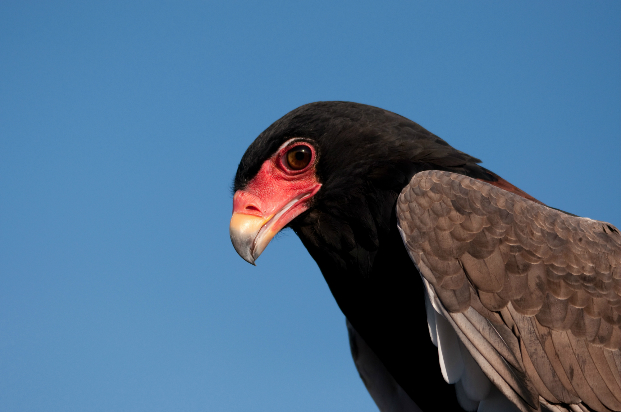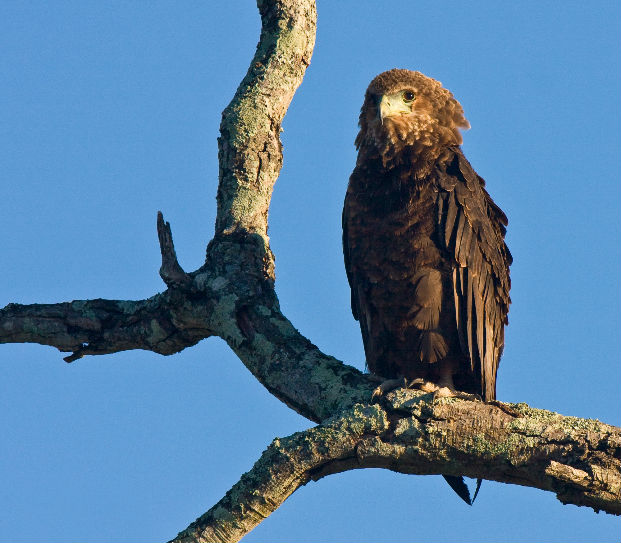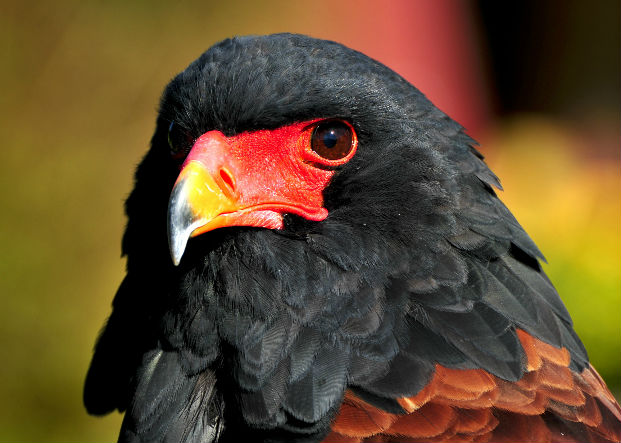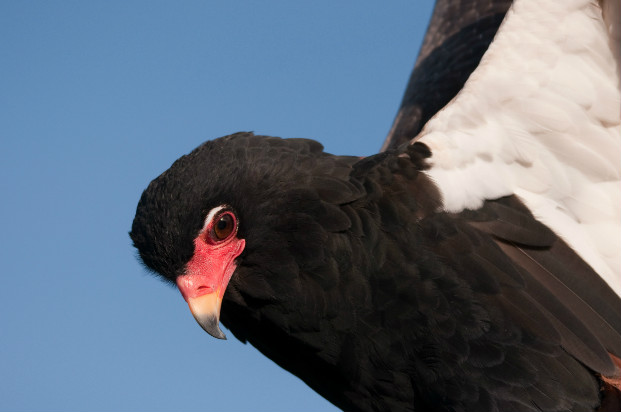A stunning bird of prey with black plumage that contrasts with its red beak and feet. They are common resident of savanna and both open and closed woodland. They feed on small mammals, birds and reptiles and they are adept at finding carcasses before other scavengers. They pair up for life and hold a territory all year round.
Vote for the fact you find most fascinating
In a foraging flight the bateleur will fly at 50 to 80 kph covering approximately 400 km a day.
The scientific name of the bateleur describes the bird as having a beautiful face but with no tail. The genus, Terathopius, means “marvellous face” and the species name, ecauadatus, means “without tail”.
Bateleurs hunt and scavenge by flying 50m to 150m over the ground in a zig-zag pattern. This approach enables them to find carcasses ahead of other scavengers.
It takes over 7 years for a bateleur to develop its adult plumage.
Bateleurs are opportunistic feeders and will fly along roads in search of road kill.
A pair of courting bateleurs is quite a sight with the male diving from height at the female who rolls over onto her back in mid-air to display her talons.
Whilst the short tail of the bateleur reduces drag in flight it does create instability which the bird compensates for by tipping from side to side.
The name bateleur is derived from the old French word for tumbler or acrobat owing to the birds “tight-rope walking” appearance as its tips from side to side in flight.







